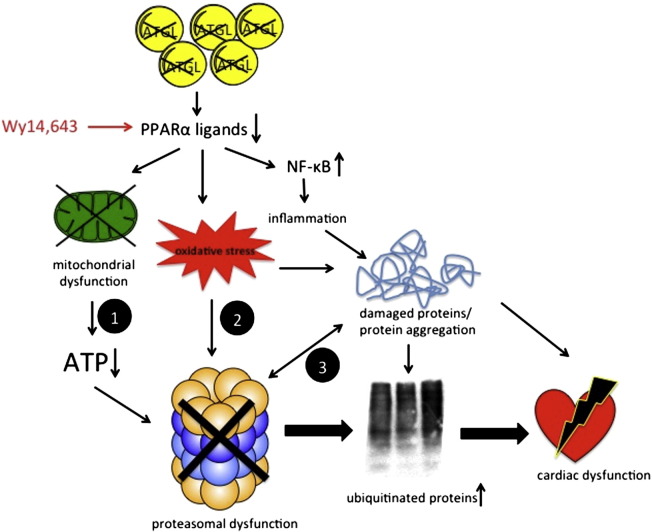Scheme 1.
Interplay of signaling pathways leading to cardiac dysfunction. ATGL deficiency in cardiomyocytes results in decreased production of lipid ligands for PPARα activation. Consequent mitochondrial dysfunction results in decreased intracellular ATP levels, leading to reduced activation of the 26S proteasome (path 1). Proteasomal dysfunction causes accumulation and aggregation of ubiquitinated proteins. Increased oxidative inflammatory stress may damage critical residues/domains within the catalytic core of the proteasome (path 2). Damaged and/or misfolded proteins impair proteasomal activity by saturation of the 20S core with non-degradable aggregates (path 3). Restored PPARα signaling with Wy14,643 reduces oxidative inflammatory stress, improves mitochondrial function, and consequently increases UPS activity and cardiac performance.

